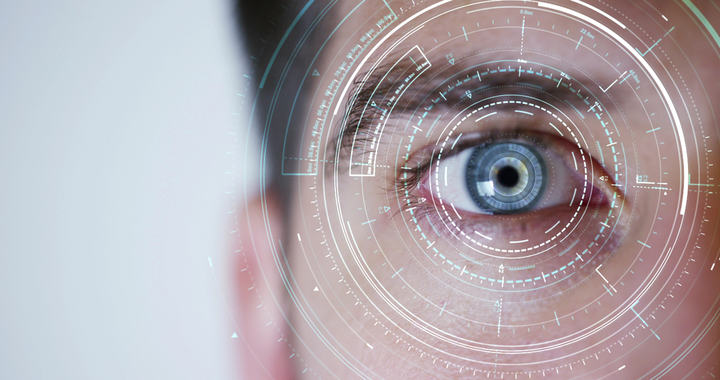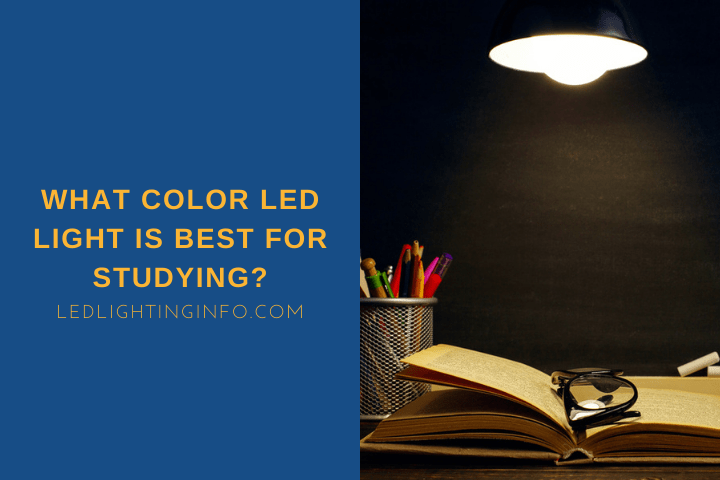To work to its full potential, your mind needs help to focus. Certain colors can have an impact on your ability to focus, and in turn, on how successful you’ll be as you study and work through your revision and assignments.
Different colors can have different effects, so it may help work out what kind of student you are.
To find the best LED lights for studying, you’ll want to think about wavelengths.
Visible light is within the wavelength range of 400-700 nanometers, with violets and blues at the lower end and with reds and oranges towards the top of this range.
What color LED light can help you work and get the best possible grade?
Cool light colors – blues and whites – are the best color LEDs for studying. They mimic daylight, which helps to keep your mind awake and focused. Cooler colors will make sure that you’re at your most attentive as you study.
To help you find the best color LED light for studying, I’ll cover:
- Whether or not white lights are good for studying
- If you should use warm light
- Things to consider other than the color of the light you use for studying
Is White Color Temperature Good For Studying?

White light is the closest you’ll get to natural daylight from your brain’s perspective. White light isn’t one specific wavelength, but all light wavelengths at once. Blues have a similar effect, though these are at the lower end of the visible spectrum of light.
To replicate daylight within your study or dorm, you’ll want your lights to be bright. Warmer, softer lighting can make you feel calm, relaxed, and sleepy. Bright lights will help you stay awake and focus, so you can complete your assignments.
Natural daylight is around 5,000K~6,500K. Photographers use lights around 5,000K to mimic an overcast day, whilst 6,500K and above will act like direct sunlight. When buying LED light bulbs, look for these color temperatures.
It is worth noting that lumens are not the same as Kelvins. Lumen measurements refer to bulb brightness, whilst Kelvins refer to the LED bulb’s color temperature.
For that reason, it is possible to find LED bulbs that are low lumen and high Kelvin, and vice versa. For a studying environment, you should look for high lumen bulbs so you can actually see what you’re reading, writing or creating.
Is Warm Light Good For Studying?

Warm lights are not suitable for studying.
Warm colors are reds and oranges, with wavelengths at the higher end of the spectrum. These warm colors are ones that your brain will naturally associate with rest and with bedtime.
Warm colors, with higher wavelengths, trigger a response similar to that caused by a sunset or soothing candlelight. Instead of helping you stay awake and focus, warm colors create a relaxing environment that will trigger your body’s natural melatonin production – the sleep chemical.
Melatonin is a natural hormone that controls your sleep cycle. Its production is triggered when daylight is reduced, and it encourages your body to sleep. Warm lights and dimly lit rooms will trigger melatonin production, helping your body to slow down.
Studies have found that light colors can significantly influence circadian rhythms. Blue and white lights improve alertness and cognitive performance, whilst warm lights restrict attention span.
Other Aspects Of Lighting For Improved Focus

The colors should not be your only consideration when creating the perfect environment for studying successfully.
Another essential thing to consider is glare.
Simply put, glare occurs when your eyes haven’t been able to adjust to the intensity of light they’re being hit with.
Glare is more likely to happen when your eyes are being hit by direct light or when light levels are frequently changing so your eyes can’t keep up with the light levels.
There are simple ways to minimize glare when you’re picking and positioning your lights.
Ensure that lights aren’t aimed at your face and ensure no smooth or polished surfaces for the light to bounce directly off. It can help to angle lights towards the surface of your desk, where your notebooks or your computer keyboard are positioned.
If you notice that lights always feel too bright and you’re struggling to study successfully, look for an LED bulb with lower lumens while maintaining the same color temperature (Kelvin measurement).
A bulb with lower lumens will reduce the brightness without affecting the color, but if you choose a bulb that isn’t bright enough, then it could be hard to see what you’re doing.
You should also consider CRI when choosing your LED bulbs. The Color Rendering Index, measured on a scale of 1 to 100, indicates how accurately you’ll see colors when the room is lit by an LED bulb.
A high CRI rating (close to 100) will make colors look vibrant and authentic, just like if they were seen in bright daylight, while a lower CRI rating makes the colors you see look dull and muted.
Choosing LED bulbs with CRI ratings of at least 80 is best. Of course, this is particularly important if accurate colors are essential in your line of study.
Suppose you’re a fashion designer, graphic designer, or artist, for example. In that case, you’ll want to make sure that any colors you see are as accurate as possible.
Final Words
When you’re creating the perfect environment for studying, not all LEDs are equal. Your choice of color temperature can be the difference between a successful night of learning and an evening of absolute exhaustion.
For a successful study, you should choose blue or white LEDs. These mimic daylight, helping to keep your brain at its most active and alert.
Kelvins (color temperature measurements) are not the only significant feature. Also consider lumens, to ensure that your LEDs are bright enough to light your room correctly and the CRI rating of LED bulbs for accurate color representation.
Finally, think carefully about lighting positions and objects that the light can bounce off. You don’t want light shining directly at your face, but it should be direct enough to light your books and anything you’re using to study.
Do you find that warm orange and red lights make you feel more relaxed and sleepy? Do you focus better when a room is lit by white or blue LEDs?
Share your thoughts and experiences in the comments so that others can learn from your discoveries.
Looking for an LED bulb but not sure what type you need?
Check out my free bulb picker and select the right bulb within few clicks.

